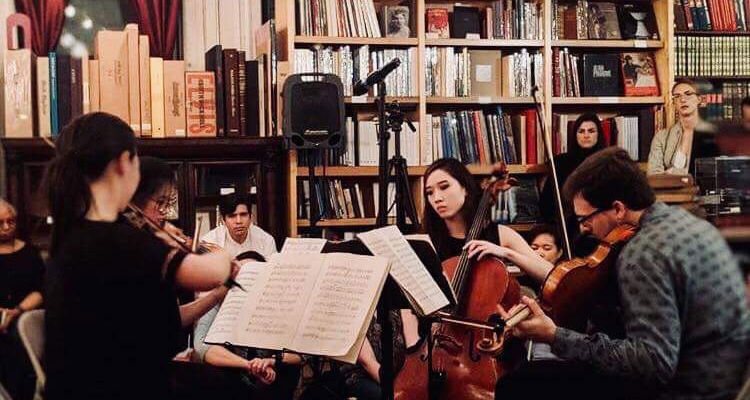
Brahms: Piano Concerto No. 1; Bartok: Dance Suite -- Chamber Transcriptions by Taide Ding
Kensington
Sat, September 7, 2024, at 4:00 PM,
PDT
- COVID vaccination with booster required (honor system)
- COVID testing not required
- This is an indoor event
- Masks are required for the entire groupmuse
- If you feel sick, stay home

- Bring any drinks except red wine
-
Wheelchair access
- Wheelchair Accessible
This is a groupmuse
A live concert in a living room, backyard, or another intimate space. They're casual and friendly, hosted by community members.
Host
Enjoy an afternoon of Taide Ding's recent transcriptions of Brahms first piano concerto for piano quintet, and of the Bartok Dance Suite.
Please arrive at 4PM - music will start shortly thereafter.
What's the music?

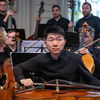

Béla Bartók: Dance Suite (1923)*
I. Moderato
II. Allegro molto
III. Allegro vivace
IV. Molto tranquillo
V. Comodo
VI. Finale. Allegro
*arranged for piano four hands by Taide Ding (2023)
Johannes Brahms: Piano Concerto in D minor, Op. 15 (1854-1858)**
I. Maestoso
II. Adagio
III. Rondo: Allegro non troppo
**arranged for piano quintet by Taide Ding (2024)
Where does this music come from?
Prior to the advent and wide adoption of recording technologies, the arrangement of orchestral music for chamber ensembles was a common method for increasing the accessibility of music, as it enabled audiences in smaller and/or domestic settings to experience works which otherwise could have only been heard in large, urban concert halls.
For example, arranging orchestral music for piano four hands was a widespread practice in the 19th and early 20th centuries, with composers arranging their own symphonies (e.g. Schumann, Brahms, Dvořák, Tchaikovsky), tone poems (e.g. Liszt, Smetana, Respighi), and stage works (e.g. Stravinsky, Bartók) for piano four hands. Composers often presented their orchestral works first to their friends and colleagues in four hands form before rolling them out to the public in the concert hall. Accordingly, the mapping from orchestral to piano four hands music frequently went in the opposite direction as well, with numerous works such as Brahms’s Hungarian Dances, Dvořák’s Slavonic Dances, and Ravel’s Rapsodie Espagnole and Ma mère l’Oye written originally as four hand works that their respective composers only subsequently expanded for orchestra.** Composers also arranged each others’ works for piano four hands, from Taneyev and Rachmaninoff arranging Tchaikovsky’s ballet music, to Ravel arranging Debussy’s orchestral works such as Prélude à l'après-midi d'un faune and Nocturnes.
Similarly, it was common practice to arrange and perform keyboard concertos as chamber works; Bach’s concertos for keyboard and strings as well as several of Mozart’s early piano concertos were designed from the beginning as chamber-compatible works, and later concertos by Mozart as well as Beethoven were quickly arranged for chamber ensembles by their pupils and colleagues such as Czerny, Hummel, and Lachner. Chopin played his concertos with string quartet or quintet in his salon concerts more often than he did with full orchestra on the concert stage, and Brahms scored his D minor piano concerto for two pianos before expanding it for piano and orchestra.
In fact, both works on this program exist in arrangements in the composer’s hand, as in addition to the aforementioned original two-piano version of Brahms’s D minor piano concerto, Bartók arranged his Dance Suite for solo piano two years after premiering the original orchestral version. Each of these composers’ alternate conceptions of their own works were invaluable references for me as I worked on my own arrangements of these works, and I am very excited to have the opportunity to present each of these works in a novel format and for audiences to experience them in a new light. —Taide Ding
** Another interesting example of four-hands music transformed into orchestral music is Paul Hindemith’s Symphonic Metamorphosis, which is based on four-hands music by Carl Maria von Weber that Hindemith and his wife liked to play.
Location
Exact address sent to approved attendees via email.
This is a groupmuse
A live concert in a living room, backyard, or another intimate space. They're casual and friendly, hosted by community members.
Host
Attendees


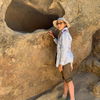







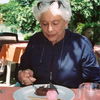



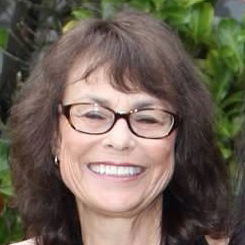



 Continue with Facebook
Continue with Facebook
 Continue with Google
Continue with Google
 Continue with Apple
Continue with Apple
Comments (1)
Comment sections are only for participants.